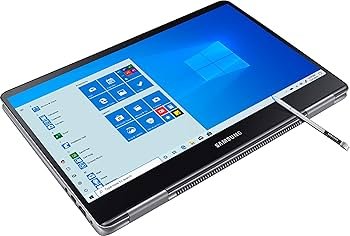In a world driven by technology and innovation, notebooks have evolved from being simple note-taking tools to powerful portable computing devices. Whether you are a student, a business professional, a gamer, or a creative designer, a reliable notebook is an essential part of your daily life. From lightweight ultrabooks to performance-oriented laptops, the range of options available today can be overwhelming. In this blog, we’ll break down everything you need to know about notebooks — their types, features, and how to choose the best one for your specific needs.
What Is a Notebook?
A notebook, often used interchangeably with the term “laptop,” is a compact personal computer designed for portability and efficiency. Unlike bulky desktop computers, notebooks integrate all components — display, keyboard, touchpad, storage, and battery — into a single lightweight unit. They are designed for productivity on the go, allowing users to work, study, or entertain themselves anywhere.
While early notebooks were designed mainly for word processing and internet browsing, today’s devices offer advanced capabilities like high-resolution graphics, fast SSD storage, touchscreen interfaces, and long battery life. Modern notebooks can handle everything from 4K video editing to complex data analysis.
Types of Notebooks
Choosing the right notebook depends on how you plan to use it. Let’s look at the main types available in the market:
1. Ultrabooks
Ultrabooks are slim, lightweight notebooks known for their portability and long battery life. They usually come with solid-state drives (SSD) and power-efficient processors. Perfect for travelers, business users, and students, ultrabooks offer a balance between performance and convenience. They often feature sleek designs, high-resolution displays, and quick boot-up times.
2. Business Notebooks
Business notebooks are designed for professionals who need security, durability, and performance. They come with enterprise-grade security features such as fingerprint sensors, TPM chips, and advanced encryption. Business models typically have stronger build quality and longer warranties. They are ideal for office use, presentations, and multitasking across productivity software.
3. Gaming Notebooks
Gaming notebooks are built for high performance. They feature dedicated graphics cards (like NVIDIA GeForce or AMD Radeon), powerful processors, and advanced cooling systems. These machines can handle graphically demanding games, 3D rendering, and even virtual reality experiences. Although bulkier than ultrabooks, gaming notebooks deliver unmatched performance for gamers and creative professionals alike.
4. Convertible Notebooks (2-in-1)
Convertible notebooks, also known as 2-in-1 laptops, can transform from a traditional laptop into a tablet. With touchscreen capability and a flexible hinge design, they provide versatility for those who switch between typing, drawing, or presenting. Ideal for digital artists, designers, and students, 2-in-1 notebooks offer the best of both worlds — productivity and creativity.
5. Budget Notebooks
If your needs are basic — web browsing, email, document editing, and streaming — a budget notebook is a cost-effective choice. These notebooks may not have high-end graphics or ultra-fast processors, but they provide great value for everyday computing tasks.
Key Features to Consider When Buying a Notebook
When choosing a notebook, the right specifications can make all the difference. Here’s what you should look for:
1. Processor (CPU)
The processor is the brain of your notebook. For basic tasks, an Intel Core i3 or AMD Ryzen 3 will suffice. For multitasking or professional workloads, opt for Intel Core i5/i7 or AMD Ryzen 5/7 processors. Gamers or creators may want even higher-end models like Intel i9 or Ryzen 9.
2. RAM (Memory)
RAM determines how many applications you can run simultaneously. For smooth performance, go for at least 8GB of RAM. For video editing, gaming, or 3D design, 16GB or more is ideal.
3. Storage
SSD (Solid-State Drive) storage is faster and more reliable than traditional HDDs. SSDs drastically reduce boot time and application loading. A 256GB SSD is sufficient for most users, but professionals may require 512GB or 1TB of space.
4. Display
Choose a display that suits your needs — Full HD (1920×1080) is the standard, but 4K screens offer better clarity for creative work. For portability, smaller screens (13–14 inches) are ideal, while 15- or 17-inch notebooks are better for immersive visuals and productivity.
5. Battery Life
Battery performance varies across models. Ultrabooks often offer 10+ hours of battery life, whereas gaming notebooks may last only 4–6 hours due to their high power consumption. Always check manufacturer specifications and reviews before purchasing.
6. Ports and Connectivity
Ensure your notebook has essential ports like USB-C, HDMI, and SD card readers. Wi-Fi 6 and Bluetooth 5.0 provide better connectivity for modern wireless accessories.
7. Graphics (GPU)
For gaming, video editing, or CAD work, a dedicated GPU (such as NVIDIA GeForce or AMD Radeon) is necessary. Integrated graphics like Intel Iris Xe are sufficient for everyday office or school use.
The Role of Notebooks in Modern Life
Notebooks have become indispensable in virtually every profession and lifestyle. Here’s how they are transforming daily routines:
-
Students use notebooks for research, online classes, and creative projects.
-
Professionals rely on them for virtual meetings, presentations, and productivity apps.
-
Gamers enjoy portable entertainment with high-performance gaming laptops.
-
Designers and Creatives use notebooks for digital art, photo editing, and content creation.
-
Remote Workers depend on notebooks to stay connected and efficient from anywhere.
With remote work and hybrid learning becoming the norm, the demand for versatile notebooks continues to grow.
The Future of Notebooks
The future of notebooks looks promising with advancements in AI, battery technology, and lightweight materials. Manufacturers are focusing on thinner designs, energy-efficient processors, and longer battery lives. Expect features like AI-powered performance optimization, OLED touch displays, and even foldable screens to become mainstream.
Sustainability is also becoming a key factor. Brands are now emphasizing eco-friendly materials, energy-efficient components, and recyclable packaging to reduce environmental impact.
Why Choose Tecisoft for Your Next Notebook
When it comes to finding the perfect notebook, few suppliers offer the range, reliability, and customer satisfaction that Tecisoft does. Whether you’re a student searching for a dependable device, a business looking for bulk corporate orders, or a professional seeking a high-end workstation, Tecisoft provides a wide selection of notebooks from leading brands — all backed by expert support and competitive pricing. Their commitment to quality and innovation ensures that customers get not just a product, but a long-term solution for productivity and performance.
Conclusion
Notebooks have evolved from simple portable computers into powerful tools for work, creativity, and entertainment. From sleek ultrabooks to high-performance gaming machines, there’s a notebook for everyone. By understanding your needs and choosing the right specifications, you can invest in a device that boosts your productivity and enhances your digital lifestyle.
And when you’re ready to make that investment, choosing a trusted supplier like Tecisoft ensures that you’ll get genuine products, dependable service, and a seamless buying experience — helping you stay connected and productive in today’s fast-moving digital world.







